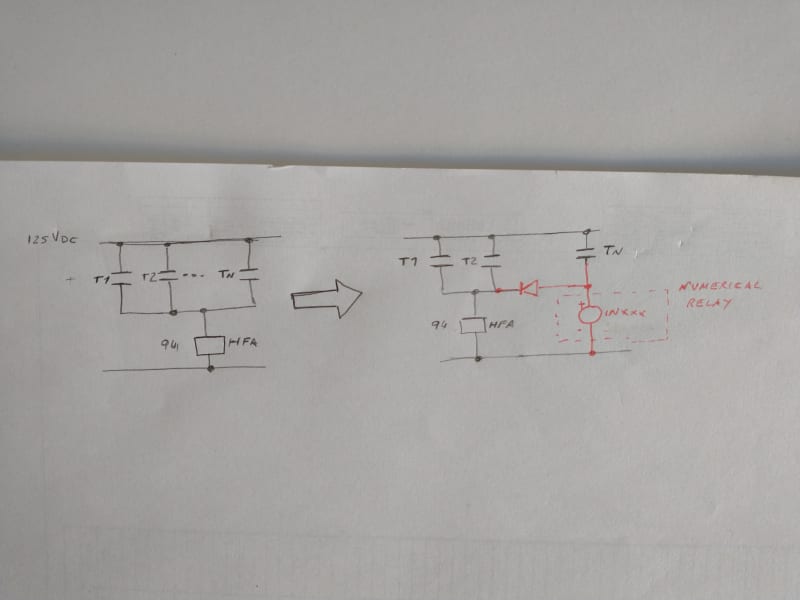Distribution73
Electrical
- Mar 18, 2015
- 43
Hi,
I would appreciate it very much to know your opinions on the following subject:
We are modifying an existing electromechanical busbar tripping circuit, and we would like to segregate the new trip contacts by means of a blocking diode. The control voltage is 125Vdc.
The new tripping branch we are including is intended to energize existing GE-HFA type relays which in turn trip a number of busbar breakers. It doesnt energize the trip coil of a breaker itself.
For this type of application, I have been advised to use a 30A forward current, 1200V PIV (reverse voltage)diode.
My queries:
- Do we really have voltage peaks any close to 1200V when we switch currents of tripping relays? I have come across products from GE (102L218G8) or ABB (TRB-2) that appear to to be intended for this application and they are rated for lower voltages (600V/200V respectively).
- Is there any P/N which is typically used for this application? I have seen ST diodes or Semikron that appear to be suitable, but not sure if there is any particular easy to find p/n.
- Any other particularity/characteristic that should be considered for this type of application?
Thank you very much in advance!
I would appreciate it very much to know your opinions on the following subject:
We are modifying an existing electromechanical busbar tripping circuit, and we would like to segregate the new trip contacts by means of a blocking diode. The control voltage is 125Vdc.
The new tripping branch we are including is intended to energize existing GE-HFA type relays which in turn trip a number of busbar breakers. It doesnt energize the trip coil of a breaker itself.
For this type of application, I have been advised to use a 30A forward current, 1200V PIV (reverse voltage)diode.
My queries:
- Do we really have voltage peaks any close to 1200V when we switch currents of tripping relays? I have come across products from GE (102L218G8) or ABB (TRB-2) that appear to to be intended for this application and they are rated for lower voltages (600V/200V respectively).
- Is there any P/N which is typically used for this application? I have seen ST diodes or Semikron that appear to be suitable, but not sure if there is any particular easy to find p/n.
- Any other particularity/characteristic that should be considered for this type of application?
Thank you very much in advance!

